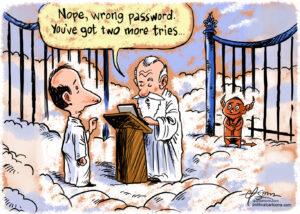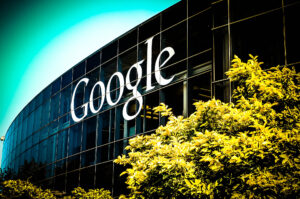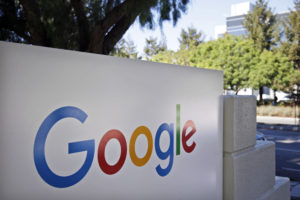You Are Here
As with almost every technology that first seemed a miracle before becoming commonplace, GPS navigation followed a tortured and convoluted path to ubiquity.
“Never Lost Again: The Google Mapping Revolution That Sparked New Industries and Augmented Our Reality”
A book By Bill Kilday

Bill Kilday opens his tech memoir about the digital mapping revolution with a rumination about angrily getting lost on Boston’s convoluted highways. Now practically unheard of, and inconceivable to the smartphone generation, this was once a daily source of misery for travelers: “Somehow I got turned around on my way home,” Kilday writes in “Never Lost Again.” “In frustration, I pounded my fist against my car’s dashboard, yelling at nobody but myself, while driving five miles in the wrong direction down Route 2, looking for the next roundabout. Or maybe it was 3A?”
Click here to read long excerpts from “Never Lost Again” at Google Books.
How routine it now is that we can simply swipe open a detailed and updated map of almost any place on Earth, with a bright, blue dot announcing YOU ARE HERE. As with almost every technology that first seemed a miracle before becoming commonplace, GPS navigation followed a tortured and convoluted path to ubiquity. Kilday is well-positioned to recount the story. A very early employee of a company called Keyhole (which, after many twists and turns, is now known as Google Maps), he was present at the creation. Kilday’s memoir shines in its description of the volatile oddities of start-up life: the birth of the initial idea that first sounded crazy, the constant cash-flow problems and efforts to keep bankruptcy at bay, and the perplexing search for a sustainable business model.
While Keyhole’s engineers pioneered the unsexy but critical back-end infrastructure necessary to manage terabytes of detailed satellite images—tiling all that data into a seamless mosaic was at the core of the innovation—Kilday waded into the chaos of industry conferences to sell the wizardry. The company’s first big clients unexpectedly were commercial real estate brokers who wanted a simple way to investigate properties. Mapping shopping centers in Nowheresville wasn’t part of the original dream, but the journey had other moments of transcendent grace that kept the mission alive. Keyhole’s technology was so novel—and magical—that every demo of the product immediately created a scrum of awed onlookers wanting to scroll, like gods, across the Earth’s surface. What every new user did, Kilday tells us, was find their own house and see their own domestic life on Keyhole. The map both flattered human vanity by putting you at the middle of creation (that blue dot) and located your mundane existence within a greater whole. But despite the demo magic, not many people were actually buying it.
Then one day, whoosh! As with so many start-up stories, the flukiest stroke of luck decided the company’s fate. After 9/11, Keyhole made a deal to provide CNN with mapping software for its coverage of the wars in far-off deserts and cities. Keyhole’s wily CEO, John Hanke, insisted that CNN include a link to Keyhole’s website on any CNN graphic, and as soon as the network went live with coverage, the company was deluged with so much interest that the map servers started crashing (always a good sign for a start-up).
That soon snowballed into growing revenue and interest from a still-private search company called Google. Despite some initial skepticism—what was a search company buying a mapping company for?—Keyhole warmed and finally agreed to be acquired, a successful outcome for a very fraught venture.
Much like an entrepreneur’s life, the book settles into a lower (and slower) gear after the successful acquisition and the ingestion of Keyhole into Google. Gone were the days of (almost) bouncing payroll checks and cheap Costco snacks in the kitchen. Instead, here was a tech utopia populated by armies of smart, motivated engineers and executives where cost or revenue was rarely discussed, all in a theme-park paradise of free massages and gourmet food.
But with all that came a new and foreign specter: politics. Google was just then going public in a much-watched IPO, and the company had curdled into competing fiefdoms and egos. The Keyhole team, still blinking in astonishment at its wild ride and thunderously successful conclusion, was plopped into a budding corporate battlefield. Kilday spends many pages describing his tiptoeing in and around the internal empire of Marissa Mayer, notable early Googler and later Yahoo CEO with a reputation for prickliness. He watches as his much-respected former chief executive and boss elbows his way into a position of influence so the Keyhole dream will survive the jungle of competing priorities.
Fortunately for Keyhole, its technology had the support of the only two fully indispensable and unquestionable Googlers: founders Sergey Brin and Larry Page. In a memorable early meeting, Kilday, mystified by the lack of discussion about concrete revenue or usage targets, blurts out the question: “Larry, Sergey, ten million dollars or ten million users, what would you prefer?”
Such pedestrian concerns seem to puzzle the Google golden boys. Eventually, they very pointedly reply, “I think you guys should be thinking much bigger than that,” and punctuate the thought (and the meeting) with a withering look at Keyhole’s now-former CEO Hanke. Those figures seemed impossible at the time to a company whose numbers were nowhere near that.
This is the strutting hubris and hyperbolic sense of scale untethered from reality that sets up tech titans, whether from Google or elsewhere, for mockery from mere mortals. But here the Google founders were correctly envisioning our present (better than even the technology’s creators did) and pushing them to make it a reality.
Coming down a few notches from Page and Brin, Kilday also gives us an almost day-by-day chronicle of the lives of midlevel Google executives. Tech insiders will be amused by the early vignettes of people who are now part of Silicon Valley’s power elite. The more casual reader might be bored at the parade of unknown names.
Kilday’s writing style is that of the product marketing man with an MBA, not the frenetic, reckless start-up renegade we’ve come to associate with Silicon Valley. The prose reads like the launch documents Kilday surely once authored: clear, well-paced, with the occasional (but tempered) narrative flair. This is not the Hunter S. Thompson treatment of start-ups. The personal barely creeps into Kilday’s account and is limited to passing mentions of children and bits of group bonding at college football games. This is tech done by adults: grown men and women with spouses and mortgages and careers they are forging. It’s a necessary reminder that the most important technologies are not cooked up solely by the T-shirt-wearing, late-night-coding, social-media-oversharing, 20-something adult-olescents who populate shows like HBO’s “Silicon Valley.”
That pulsing blue dot, which now lives everywhere, is the real sort of world-changing disruption that the unostentatious persistence of Kilday and his associates produced. Thanks to them, every soldier, sailor or just workaday commuter can unfailingly reach their destination. “Never Lost Again”—the title itself describes our new world. The book, like an orderly set of Google Maps instructions, describes how we got there.
Garcia-Martinez is a former Facebook product manager and Twitter adviser, and is the author of “Chaos Monkeys: Obscene Fortune and Random Failure in Silicon Valley.”
©2018 Washington Post Book World
Your support matters…Independent journalism is under threat and overshadowed by heavily funded mainstream media.
You can help level the playing field. Become a member.
Your tax-deductible contribution keeps us digging beneath the headlines to give you thought-provoking, investigative reporting and analysis that unearths what's really happening- without compromise.
Give today to support our courageous, independent journalists.






You need to be a supporter to comment.
There are currently no responses to this article.
Be the first to respond.